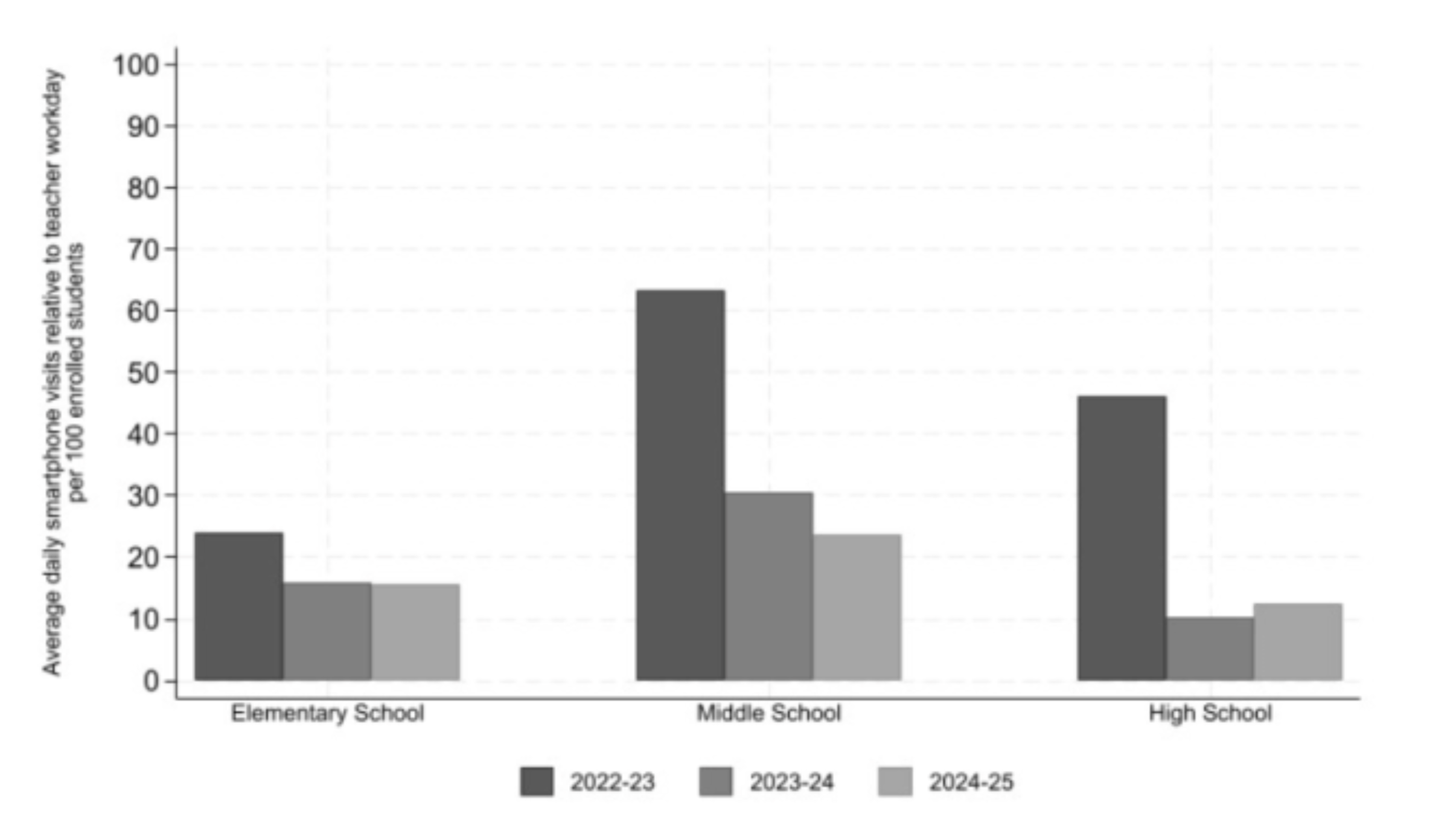The policy also featured a troubling adverse effects. The cellular phone prohibits led to a considerable boost in student suspensions in the very first year, particularly amongst Black pupils. However disciplinary actions declined during the second year.
“Cellphone bans are not a silver bullet,” claimed David Figlio, an economic expert at the University of Rochester and one of the study’s co-authors. “But they seem to be aiding children. They’re attending school more, and they’re carrying out a bit better on tests.”
Figlio claimed he was “worried” about the short-term 16 percent rise in suspensions for Black pupils. What’s unclear from this data analysis is whether Black trainees were more probable to go against the brand-new cellular phone guidelines, or whether instructors were more probable to distinguish Black trainees for penalty. It’s likewise vague from these management actions documents if trainees were very first given cautions or lighter punishments prior to they were suspended.
The data suggest that trainees adapted to the new guidelines. A year later on, student suspensions, including those of Black trainees, fell back to what they had been before the cellular phone restriction.
“What we observe is a rocky begin,” Figlio added. “There was a lot of technique.”
The study, “The Effect of Cellular Phone Bans in Schools on Student Outcomes: Proof from Florida,” is a draft working paper and has actually not been peer-reviewed. It was slated to be distributed by the National Bureau of Economic Research Study on Oct. 20 and the authors shared a draft with me beforehand. Figlio and his co-author Umut Özek at RAND think it is the very first study to reveal a causal connection between cellphone restrictions and discovering rather than just a relationship.
The academic gains from the cellular phone restriction were little, much less than a percentile point, generally. That’s the matching of moving from the 50 th percentile on mathematics and analysis examinations (between) to the 51 st percentile (still close to the center), and this tiny gain did not emerge until the second year for the majority of pupils. The academic advantages were toughest for middle schoolers, white trainees, Hispanic students and male trainees. The scholastic gains for Black pupils and women pupils were not statistically substantial.
I was surprised to learn that there is information on student cellular phone usage in institution. The writers of this research study made use of details from Advan Research study Corp., which accumulates and analyzes information from mobile phones worldwide for organization functions, such as determining the amount of people go to a certain retail store. The scientists were able to acquire this information for colleges in one Florida institution area and estimate the amount of pupils got on their mobile phones prior to and after the restriction entered into impact between the hours of 9 a.m. and 1 p.m.
The information revealed that greater than 60 percent of center schoolers, usually, were on their phones at the very least as soon as throughout the institution day before the 2023 ban in this certain Florida area, which was not named yet described as one of the 10 biggest districts in the country. (Five of the country’s 10 biggest institution districts remain in Florida.) After the restriction, that dropped in fifty percent to 30 percent of center schoolers in the first year and down to 25 percent in the second year.
Primary school pupils were much less most likely to be on cellular phones to start with and their in-school usage fell from regarding 25 percent of pupils prior to the restriction to 15 percent after the restriction. More than 45 percent of high schoolers got on their phones prior to the ban which was up to concerning 10 percent afterwards.
Ordinary daily smart device check outs in colleges, by year and quality level

Florida did not pass a total cellphone restriction in 2023, yet imposed severe constraints. Those limitations were tightened in 2025 and that added tightening up was not researched in this paper.
Anti-cellphone plans have actually become progressively prominent given that the pandemic, greatly based upon our collective adult intestine inklings that kids are not finding out well when they are consumed by TikTok and SnapChat.
This is perhaps an unusual situation in public law, Figlio said, where the “data back up the suspicions.”
Contact staff author Jill Barshay at 212 – 678 – 3595, jillbarshay. 35 on Signal, or [email protected]
This tale about mobile phone prohibits was created by The Hechinger Report , a nonprofit, independent wire service focused on inequality and innovation in education and learning. Register for Proof Information and various other Hechinger newsletters